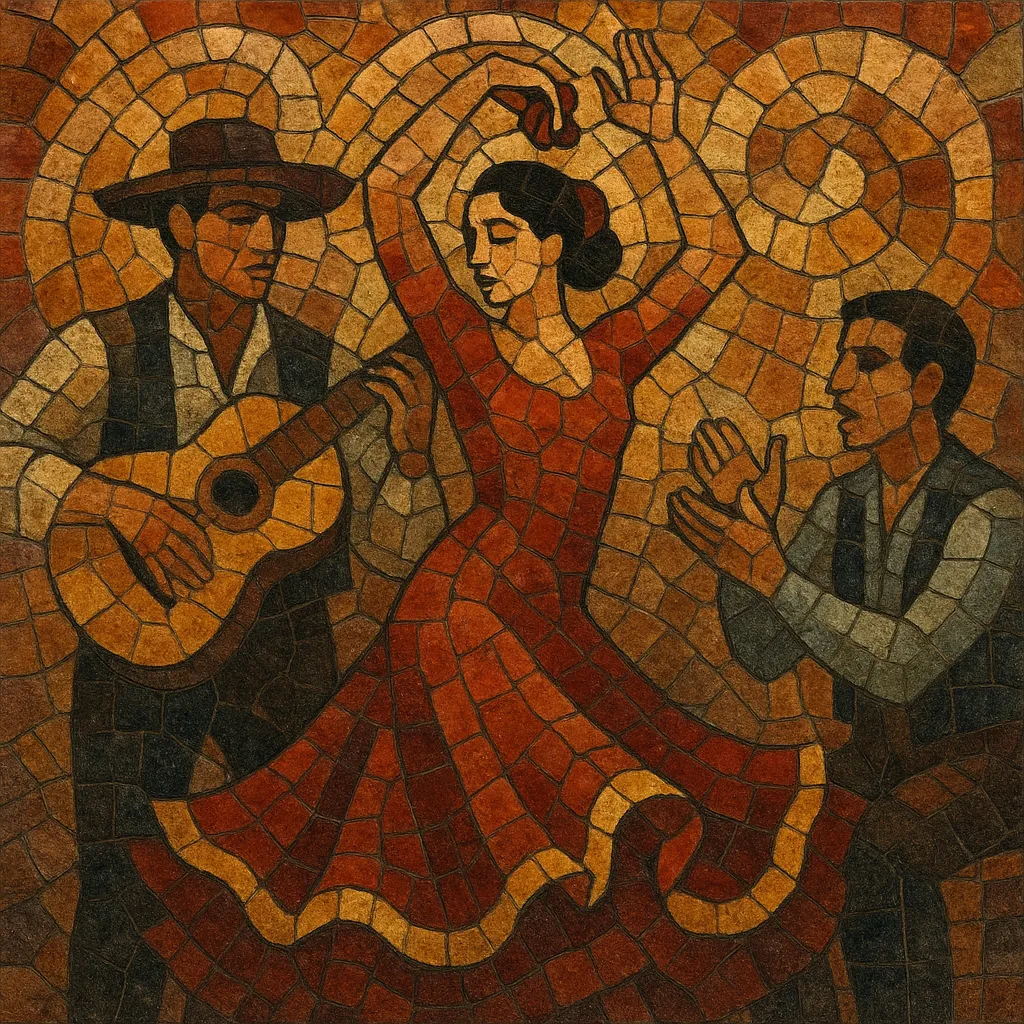Fandango is a lively Iberian song-and-dance form in fast triple meter, traditionally accompanied by guitars, hand claps (palmas), and castanets. It features a characteristic hemiola (the alternation or superposition of 3/4 and 6/8 feels), call-and-response between voice and accompaniment, and strophic verses (coplas) suited to improvised dance.
Originating in Spain in the 18th century, the fandango quickly became a pan-Iberian craze and entered art music through Baroque and early Classical composers. In Andalusia it crystallized into several regional types (e.g., fandangos de Huelva, malagueñas), many of which later became core palos of flamenco. The word “fandango” also traveled across the Atlantic; in Mexico and Brazil it names community dance gatherings linked to related repertories, even when the music itself diverges from the Spanish model.
Fandango emerged in Spain during the early to mid-1700s, likely from Andalusian and broader Iberian folk dance-song practices. Its unmistakable rhythmic identity—fast triple meter with pervasive hemiola—made it a favorite in salons and public festivities. Early written traces appear in guitar manuscripts by Santiago de Murcia and later in keyboard and chamber works.
By the late 1700s, the fandango had crossed into art music. Composers such as Antonio Soler (his famous Fandango in D minor) and Luigi Boccherini (the "Fandango" finale of his Guitar Quintet G. 448) stylized the dance for harpsichord and chamber ensemble, preserving the dance’s pulse while expanding its harmonic language.
In Andalusia, fandango diversified into regional and stylistic branches—fandangos de Huelva, malagueñas, and related styles—that became foundational palos in flamenco. Singers developed freer, melismatic approaches over guitar ostinati, while dancers emphasized zapateado footwork and castanet phrasing.
The term and practice spread through Iberian colonization and exchange. In Mexico, "fandango" came to denote communal music-dance gatherings central to son jarocho culture. In coastal Brazil, the imported dance evolved into fandango caiçara, blending Iberian steps with local instruments and traditions.
Fandango remains both a historical repertoire in classical music and a living tradition in flamenco and Iberian folk scenes. Its rhythmic fingerprints (especially hemiola and strummed guitar textures) continue to inform Spanish popular and concert music, while its social-dance ethos thrives in Latin American community contexts.


